Section 1 Subsystems
Memory -
Memory performance is very important on a motherboard, especially when you have a CPU with multiple cores and threads. If you have slow memory your cores and threads can become starved for data to execute. To test memory performance we run both Sisoft’s SANDRA and AIDA64. These two combine to not only give us accurate numbers but to validate each other. For testing at stock speeds the memory is hard set to 1333MHz while overclocking testing is done at the highest stable speed for the voltage of 1.65v this is due to the different memory dividers for each CPU. As such, the memory speeds will vary greatly. This means that the overclocked numbers are a little misleading and while they can show a trend are really only included to show if a board has a problem with memory performance at high clockspeeds.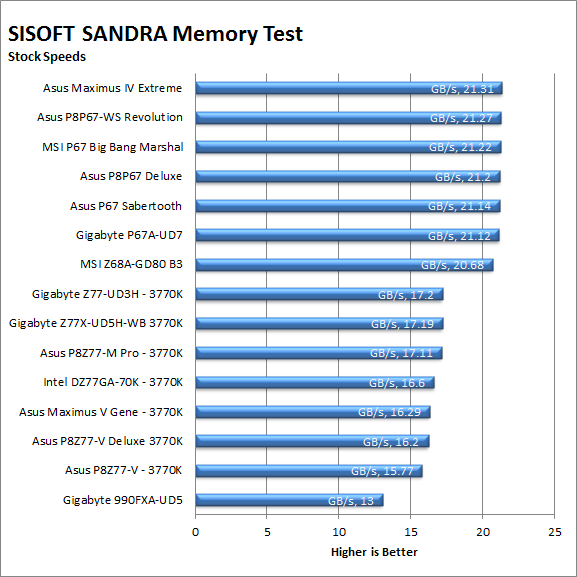
The Gigabyte Z77X-UD5H WB has solid memory bandwidth. We were not surprised here as we saw the same thing with Gigabyte’s Z77X-UD3H. Good memory bandwidth is going to get you improved performance when multi-tasking or when running applications that need to buffer a large amount of memory to work well. This is not just gaming or benchmarking, but also applications like Microsoft’s Outlook, Excel and other typical productivity applications. The performance here is a good sign that we will see good performance in many of our other tests… that is unless there is something else that stands in the way.
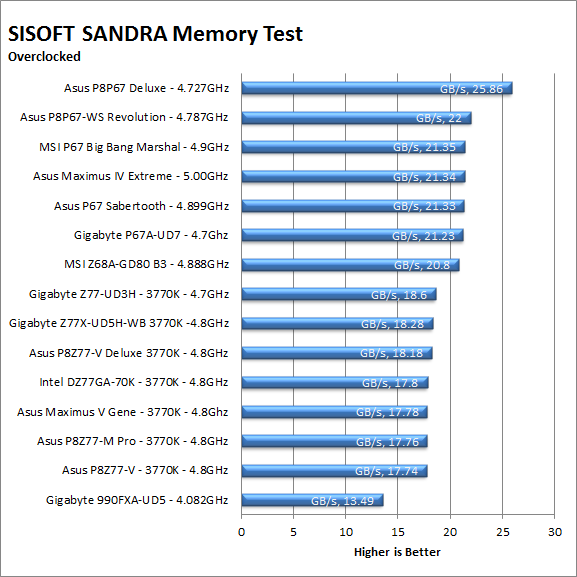
Drive performance -
Drive performance is also one of the major subsystems that goes to make up the performance of a motherboard. For our testing we use Sandra and AIDA64 again. We only test with single drives for each type of controller present on the motherboard (unless it is a professional product where we will use RIAD 5 and/or 10). We have also begun using a Seagate PS-110 USB 3 external HDD and a Kingston HyperX USB 3.0 Flash drive for our USB 3.0 performance. As a side note, we include the overclocked numbers here to make sure (again) that you are not going to see a major drop in performance due to minor instabilities at high clock speeds.
Drive speed is one of the things that can hurt good memory performance. The drive performance has to be much lower than the competition though for it to show an effect. For example of two boards have 18GB/s of memory bandwidth but one has slower HDD performance by 10MB/s then the second board can appear slower in many tests (and in actual usage). Although the difference between the top board and the Z77X-UD5H WiFi was not 10MB/s it is still enough for both SATA II and 3.0 to be of concern. 
USB 3.0 performance was right on target though with both our PS-110 and Kingston HyperX USB 3.0 drive performing well.
Power -
Power efficiency is another of those misnomers that we get caught up in. We hear about idle states and power gates. But what does that mean to you and I? On the surface having power management that reduces idle power sounds great and can be a benefit to someone that leaves their system on for long periods of time (and inactive) but how a system handles power under load and the delta between the two states is often more important than the idle power usage numbers. We use only P3 Kill A Watt instruments for measuring power.
| Power Draw iGPU Stock | Power Draw iGPU Overclocked |
 |
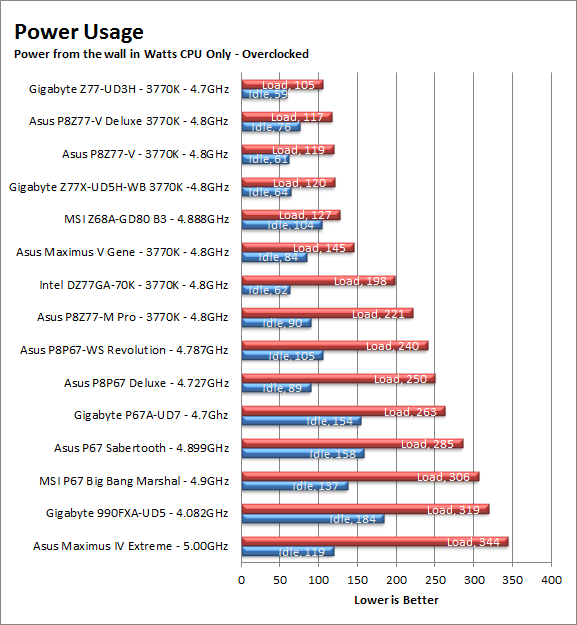 |
The Z77X-UD5H WiFi did very well in power efficiency when at stock speeds; in fact it was quite a bit ahead of the rest of the pack. We were surprised enough at this that we checked multiple times and also rechecked the settings in the BIOS to make sure they were where they were supposed to be. When overclocked and with our HD5870 in the system the Z77X-UD5H was not as efficient, but still did a pretty good job.
| Power Draw GPU Stock | Power Draw GPU Overclocked |
 |
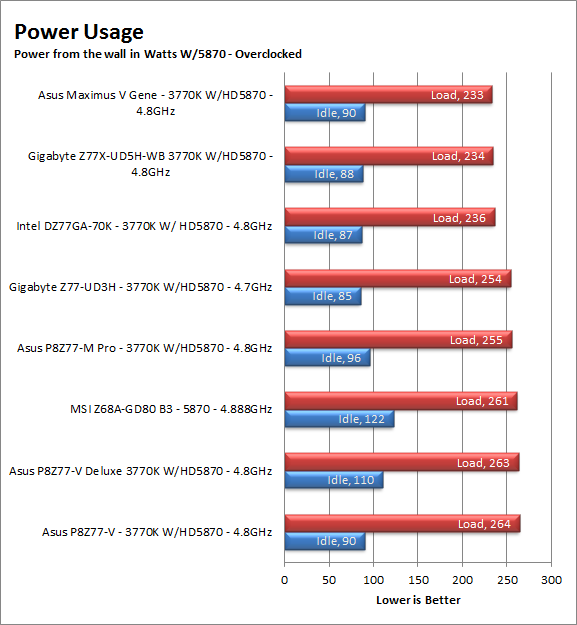 |
Cooling (Board Level) -
Board level cooling is an important factor in product performance and longevity. Components like the chipset, VRM modules and even capacitors need to be kept relatively cool to prevent failure. As these parts are made of silicon, they have a thermal breakdown threshold; or melting point. At that temperature the actual transistors built into chip will begin to deform and break down. Granted, the threshold is often very high, but you still need to make sure that components stay away from this level of heat for longer product life.
| Cooling iGPU Stock | Cooling iGPU Overclocked |
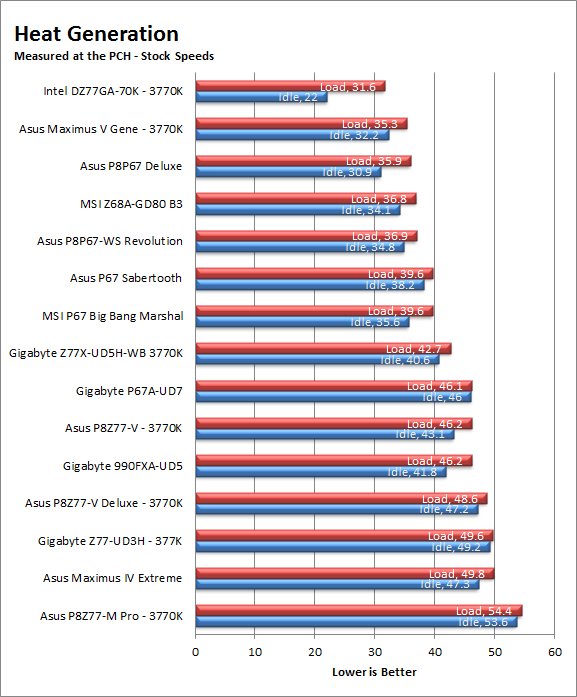 |
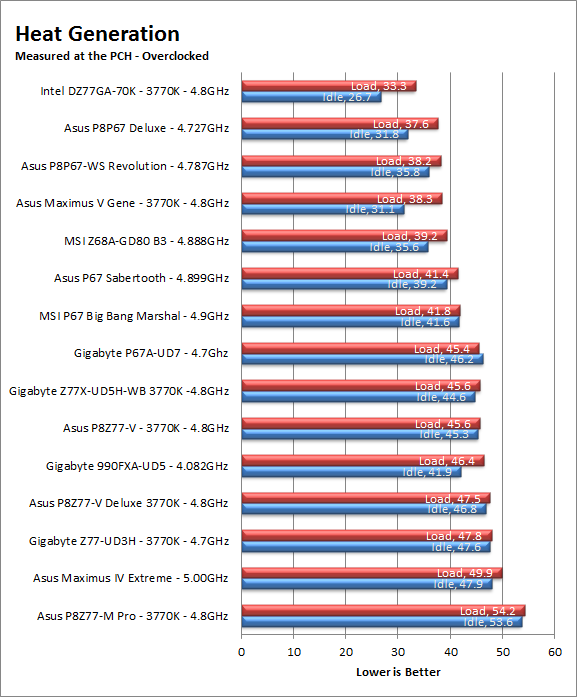 |
The Z77X-UD5H WiFi falls into our heat testing at right about the middle of the pack. This is for stock, overclocked, with add-in GPU and without. It was very interesting and does show us that while it might not be the coolest running board it can deal with the heat fairly well. This should give you good product life and overclocking potential (as you already saw).
| Heat Add-in GPU Stock | Heat Add-in GPu Overclocked |
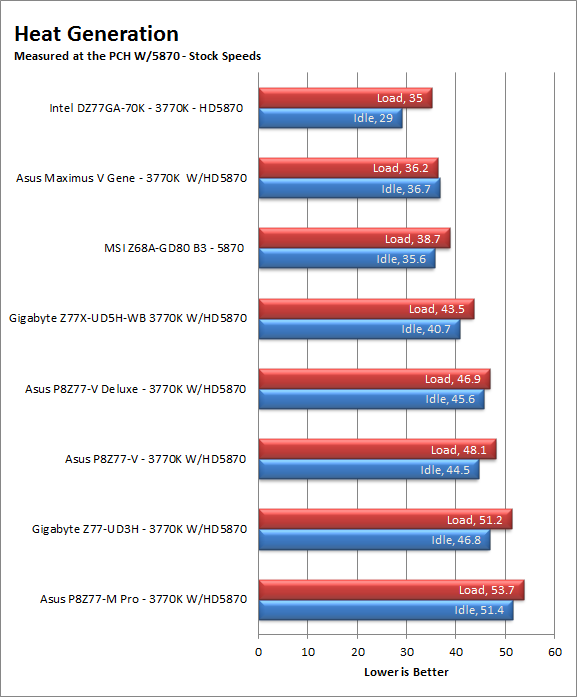 |
 |
Audio -
Audio is highly subjective. What we find pleasing may sound “off” to you. That is always going to the problem with testing audio; results will vary too widely depending on the tastes of the listener. However, there are ways of measuring the audio output with an objective ear. There is also the issue of audio causing performance issues in gaming and video playback. The reason this is a potential source of concern is that all onboard audio CODECs (Compression/Decompression) are CPU controlled. This means that while the audio chip controls the audio levels and effects of the audio the actual work is done on the CPU. Usually this will not be a problem with today’s powerful CPUs. Even the lower and consumer level products can handle high-end audio these days. But again there is the chance that a bad design or software will hinder your system and performance. On the other side the limits of board space, cost, etc will also prevent the level of audio quality you can get from an add-in board. We test all audio parts with three media types, Movie (DVD), MP3 Music, and Gaming. These are pushed to our Tec On model 55 Tube Amp to see if we can detect any signal issues in the reproduction. We briefly talked about the audio on the Z77X-UD5H WiFi when we covered the audio enhancement software (makes sense right?). While the built in audio on the UD5H WiFi is not going to wow any audiophiles it does a good job at keeping most people happy when it comes to audio performance. We found it to be good enough for most tasks and with THX Studio Pro and the EAX enhancements the gaming performance was a better than most.
Networking -
This one is something that is a requirement anymore. If you have a computer, the chances are good (like 99%) that you are also connected to high-speed internet. With this you need a good and solid LAN chip to make sure that your data flows properly out and back.
For networking performance the Z77X-UD5H WiFi was a very solid product. We had the Intel LAN controller for wired connectivity and an Atheros Wireless controller if you do not want to worry about cables. On top of that Gigabyte has included software (as we showed you a little bit earlier) that allows you to use your desktop like a fileserver, access point and more.

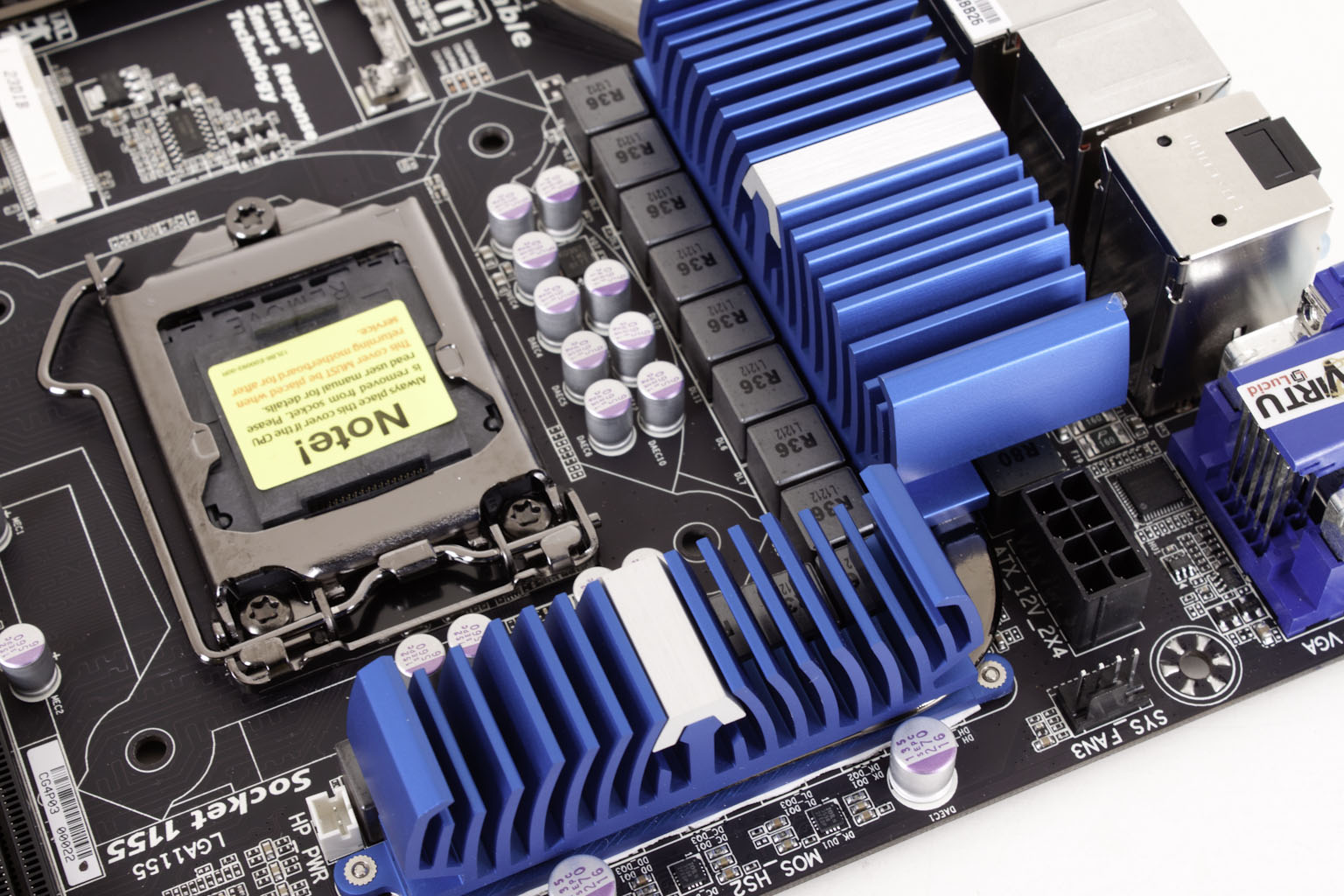 In our continuing coverage of the Gigabyte Z77X-UD5H WB we are moving into the performance side of things. Here is where it becomes difficult to differentiate between companies. The problem is that if you are testing Z77 Express based motherboards you are testing very similar platforms. It is only when you start adding in features to the mix that they separate. So the big deal here is how well do these products perform when you throw in all the advertised features (or at least as many as will work at once)? This is what we try to do with our performances testing. In our
In our continuing coverage of the Gigabyte Z77X-UD5H WB we are moving into the performance side of things. Here is where it becomes difficult to differentiate between companies. The problem is that if you are testing Z77 Express based motherboards you are testing very similar platforms. It is only when you start adding in features to the mix that they separate. So the big deal here is how well do these products perform when you throw in all the advertised features (or at least as many as will work at once)? This is what we try to do with our performances testing. In our 

